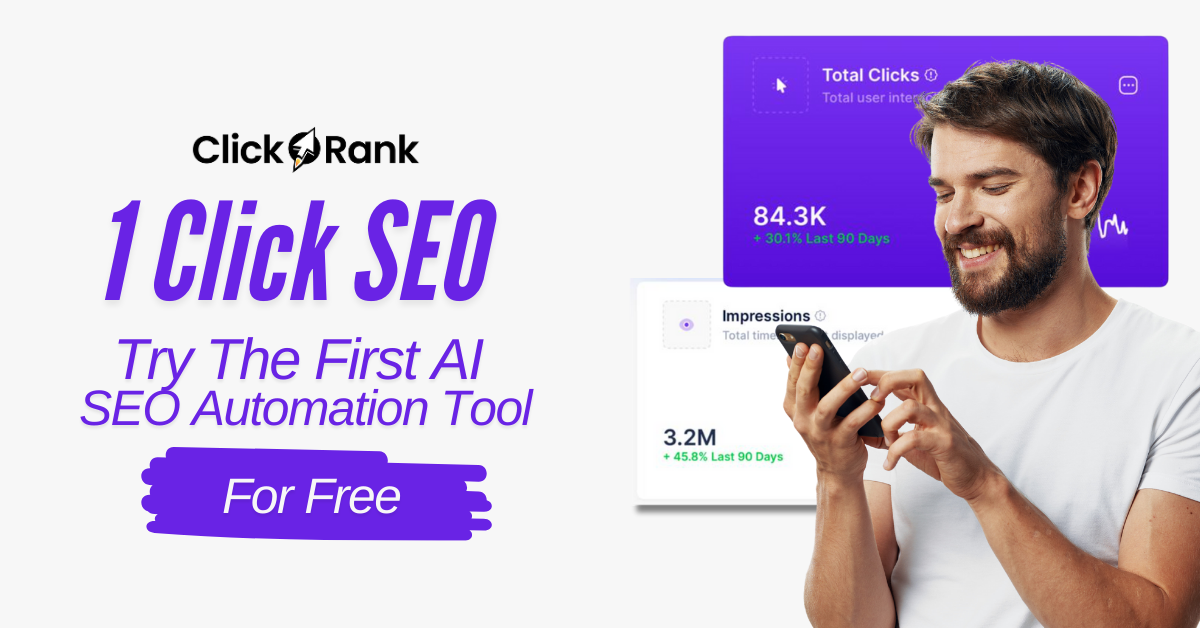Let’s start with an awkward confession: As a parent in Los Angeles, I once spent 40 minutes on a daycare website, only to leave without clicking a single thing. Why? Their only CTA was a tiny, generic ‘Learn More.’ For owners and marketers, this is a missed opportunity you can’t afford. In a city buzzing with options, turning website clicks into real parent inquiries isn’t just good business—it can mean survival for your child-care center. Today, let’s crack open what makes some calls-to-action pop while others whisper into the void, and how you can rewrite your site’s story to secure more families—one irresistible CTA at a time.
Why Most Child-Care CTAs Are Duds (And What to Fix First)
Let’s be honest: most child care center marketing efforts in Los Angeles and the Valley fall flat right at the finish line. You work hard to get parents onto your website, but then… crickets. Why? Because the majority of child-care service sites either lack any call to action (CTA) at all, or they default to vague, uninspiring phrases like “Learn More” or “Contact Us.”
If you’ve ever tried to book a tour for your own child, you know the pain. I once spent ten minutes on a local preschool’s site, scrolling and clicking, only to find “Contact Us” buried at the very bottom. No “Book a Tour,” no “See Our Classrooms,” not even a “Request Info” button. I gave up. And I’m not alone—research shows that over 70% of small business websites lack a strong, clear CTA. That’s a ton of lost families and missed opportunities.
Here’s the thing: parents in LA are busy. They’re making fast decisions, often on their phones, between errands or during a lunch break. They don’t want to guess what to do next. Your website CTAs should guide them, not leave them stranded. As Sara Brooks, Early Childhood Marketing Coach, puts it:
‘A great child care website gently takes parents by the hand, not just waves from afar.’
The Two Types of CTAs: Direct vs. Transitional
Not all CTAs are created equal. In fact, the best child care center marketing strategies use two types:
- Direct CTAs ask for a big step—like scheduling a tour, enrolling now, or joining a waitlist. These are for parents who are ready to act.
- Transitional CTAs offer a smaller, trust-building step—like downloading a parent info pack, signing up for weekly tips, or taking a virtual classroom tour. These help nurture parents who are still deciding.
Both are essential. Direct CTAs convert ready parents, while transitional CTAs capture those who need more info or reassurance. Best practices in 2025 emphasize clarity and alignment with parent intent—meaning your CTAs should match where the parent is in their decision process.
Why Weak CTAs Don’t Work
Generic phrases like “Learn More” or “Submit” don’t cut it. They’re easy to ignore and don’t tell parents what they’ll get. Strong website CTAs, on the other hand, spell out the benefit: “Book a Tour Today,” “Get Tuition Info Instantly,” or “Download Our Parent Info Pack.” These are clear, actionable, and outcome-focused—exactly what busy LA parents need.
Remember, converting website traffic isn’t about nagging parents. It’s about making their decision easier. When you offer clear, compelling call to action examples, you’re not just pushing for a sale—you’re inviting parents to take the next step that feels right for them.

Direct CTAs: When ‘Book Now’ Means Business
Let’s be honest—most child care center marketing falls flat right at the finish line. You’ve got a beautiful website, maybe some glowing testimonials, but your “call to action” is buried at the bottom or says something like “Learn More.” That’s not going to fill your tour calendar or your classrooms. If you want to turn clicks into real-life customers for your child care services in Los Angeles, you need calls to action that actually ask for the business.
Here’s the secret: Direct CTAs are for parents who are ready to take action. No dancing around. No “maybe someday.” These are the folks who’ve done their homework, read your reviews, and just need a nudge to book a tour or start enrollment. Research shows that differentiating between direct and transitional CTAs can seriously boost your conversion rates—because you’re meeting parents exactly where they are in their decision process.
What Makes a Direct CTA?
Direct CTAs ask for a big step. They’re clear, bold, and outcome-driven. Think:
- “Book a Tour Today” (link straight to your scheduling software)
- “Get Tuition Info Instantly” (email capture + pricing PDF)
- “Join the Waitlist” (for centers with limited spots—creates urgency and qualifies leads)
- “Start Enrollment Now” (for parents who are ready to commit)
These proven call-to-action examples work because they make the next step obvious. There’s no confusion, no extra clicks, and no wondering what happens after you hit the button. As Javier Mendez, an LA preschool owner, puts it:
‘Direct CTAs are for decisive parents—make their click rewarding.’
And here’s my own confession: I booked my son’s preschool after seeing a big, bold “Reserve Your Spot!” button. I was ready, and that CTA made it simple. No forms to hunt for, no endless scrolling. Just click, fill, done.
Why Direct CTAs Work for Child Care Services Los Angeles
Direct CTAs create a sense of urgency. In a city like Los Angeles, where high-quality child care spots go fast, parents want to know they’re not missing out. “Book Now” or “Join the Waitlist” tells them: act now, or risk losing your chance. It’s not pushy—it’s helpful. You’re guiding them toward a solution they already want.
But here’s your quick reality check: not every parent is ready to leap. Some need more info, a little reassurance, or just time to think. That’s why pairing direct CTAs with softer, transitional ones is smart child care center marketing. But for those ready to act? Give them a clear, irresistible next step. Your next customer might just be one click away.

Transitional CTAs: Nurturing Trust One Click at a Time
Let’s be honest—most local child care marketing falls flat because the calls-to-action (CTAs) are either missing or just too vague. “Learn More.” “Contact Us.” You’ve seen them. Maybe you’ve used them. But here’s the thing: parents visiting your website aren’t always ready to enroll on the spot. They’re curious, cautious, and want to feel understood before making a big leap. That’s where transitional CTAs come in, and they’re a game-changer for child care services in Los Angeles.
Direct vs. Transitional CTAs: Why Both Matter
Think of your website visitors as being at different points in their decision journey. Some are ready to book a tour or enroll—those are your “direct CTA” folks. But many are just starting to look around, maybe comparing centers, or even just thinking about switching providers. For these parents, a direct ask like “Enroll Now” can feel like too much, too soon.
That’s why using both direct and transitional CTAs is one of the top lead qualifying tips you can implement. Research shows that this two-pronged approach optimizes your marketing funnel, capturing both ready-to-act and “just browsing” parents.
What Makes a Transitional CTA?
Transitional CTAs are all about meeting parents where they are. Instead of pushing for a commitment, you’re offering a low-pressure next step—something valuable, but not overwhelming. It’s like giving a snack instead of a full meal. You’re building trust, not demanding action.
- Download Our Parent Info Pack
- Take a Virtual Classroom Tour
- 5 Questions Every Parent Should Ask Before Choosing a Preschool
- Get Weekly Parenting Tips from Our Director (email opt-in series)
These CTAs are irresistible because they offer real value. I’ll never forget the first time I clicked a free “5 Questions Every Parent Should Ask” checklist. It made me feel instantly more confident—and, honestly, more loyal to that center. I hadn’t even booked a tour yet!
Why Transitional CTAs Work for Child Care Services in Los Angeles
LA parents are busy and have endless choices. Transitional CTAs like info packs, guides, or virtual Q&As help you stand out by showing you care about their journey, not just their enrollment. Plus, these offers are perfect for growing your email list and keeping parents engaged long-term.
‘A strong transitional CTA is like an open door—parents can step inside without fear of a sales pitch.’ – Mia Kim, Family Child Care Consultant
Pro tip: Always use an email opt-in for downloads. This lets you nurture leads over time, sending helpful content and updates that keep your center top-of-mind.
So, if you want to boost your child care marketing and qualify more leads, start thinking beyond the hard sell. Transitional CTAs are your secret weapon for building trust, one click at a time.

How to Qualify Leads (Without Scaring Off Parents)
Let’s be honest—most website CTAs for child care services in Los Angeles are either missing, buried, or just plain boring. “Learn More.” “Contact Us.” You’ve seen them. Maybe you’re using them. But here’s the thing: parents in LA are busy, a little skeptical, and overwhelmed by choices. If you want to turn clicks into real connections, you need calls-to-action that actually guide parents to take the next step—without making them feel like they’re signing their life away.
The 2 Types of CTAs: Direct vs. Transitional
First, let’s clear up a common mistake. Not all CTAs are created equal. You need both direct and transitional CTAs on your site to capture parents at different stages of their decision-making journey.
- Direct CTAs ask for a big commitment—think “Schedule a Tour,” “Enroll Now,” or “Book a Spot.” These are for parents who are ready to take action.
- Transitional CTAs offer a smaller, no-pressure step—like a free guide, a checklist, or a waitlist form. These build trust and keep you top-of-mind for parents who are still weighing their options.
Research shows that using both types of CTAs is one of the most effective lead qualifying tips for child care services Los Angeles centers can use. You’re not just chasing inquiries—you’re nurturing relationships.
Proven Direct CTA Examples for Child-Care & Services
- “Book a Tour Today” (links to your scheduling tool—simple, clear, actionable)
- “Get Tuition Info Instantly” (parents enter their email, you send a pricing PDF—win-win!)
- “Join the Waitlist” (creates urgency, and helps you qualify leads who are serious)
- “Start Enrollment Now” (for those ready to commit—don’t make them hunt for the next step)
Transitional CTAs That Build Trust
- “Download Our Parent Info Pack”
- “Take the Virtual Classroom Tour”
- “5 Questions Every Parent Should Ask Before Choosing a Preschool”
- “Get Weekly Parenting Tips from Our Director” (email opt-in series)
Lead-Qualifying CTA Tips
- Don’t ask for a life story—just enough to guide the next step (child’s age, start date, referral source).
- Swap ‘Submit’ for more conversational copy like ‘See If We’re a Fit’ or ‘Show Me My Options’.
- Tinker with form and button placements: header, sidebar, even a curious little pop-up (yes, really—testing is key!).
- Quirky tip: Add a ‘How Did You Hear About Us?’—parents love sharing their secrets, and you get valuable marketing data.
Short forms convert better—fewer fields win, every time. And don’t underestimate the power of friendly, action-oriented button copy. As Leila Hart, owner of a San Fernando Valley tutoring center, puts it:
‘Great lead forms don’t just gather data—they build beginnings of a relationship.’
Experiment, tweak, and remember: the right CTA can turn a casual browser into your next loyal family.
Closing the Loop: Invite, Don’t Beg (And a Soft CTA That Works)
Let’s be honest—most website CTAs in child care center marketing are either missing, buried, or just plain bland. “Learn More.” “Contact Us.” You’ve seen these a thousand times, and so have parents. The problem? These generic prompts don’t guide visitors anywhere meaningful. They leave parents hanging, unsure of what to do next, and your website traffic quietly slips away without converting.
But here’s the good news: strong website CTAs don’t have to be pushy or salesy. In fact, the best ones feel like an invitation, not an ultimatum. They guide, educate, and convert—without ever making a parent feel pressured. Research shows that simply wrapping your pages with inviting, well-placed CTAs can improve site conversions by up to 22%. That’s a big leap for such a small tweak.
So, what’s the secret? It’s all about closing the loop. Every page on your site should end with a gentle nudge—a clear, friendly next step that keeps the conversation moving. Think of it as holding the door open, not shoving someone through it. For example, instead of a dead-end “Submit” button, imagine a warm, low-pressure prompt like, “Let’s Talk Kids—No Pressure.” It’s oddly effective because it acknowledges what parents really want: options, not ultimatums.
Parents visiting your site are at different stages. Some are ready to enroll today, while others are just starting their search. That’s why your CTAs should match their mindset. Direct CTAs (“Book a Tour Today,” “Start Enrollment Now”) are great for ready-to-act families. But transitional CTAs (“Download Our Parent Info Pack,” “Take the Virtual Classroom Tour”) build trust with those who need more time. Both are essential for converting website traffic into real-life connections.
And don’t forget—inviting language always outperforms stiff, standard sales jargon. A simple shift from “Submit” to “See If We’re a Fit” can make all the difference. Parents appreciate being guided, not pushed. They want to feel like they’re making the right choice for their child, not just ticking a box on a form.
So, as you look at your own site, ask yourself: Are you closing the loop, or leaving parents at a dead end? Try adding a soft CTA at the end of every page. Something like, “Have questions? Let’s chat—no pressure.” Or, “Curious if we’re the right fit? Reach out and let’s talk.”
“Your next customer may already be on your site—give them a next step they actually want.”
Great CTAs don’t just push—they invite, educate, and convert. When you offer a clear, friendly next step, you’re not just boosting your child care center marketing—you’re building real connections with families who are ready to trust you. And that’s how you turn clicks into customers, one gentle invitation at a time.
TL;DR: Getting more parent inquiries isn’t magic—it’s about giving your website visitors CTAs they actually want to click. The right mix of direct and transitional prompts can turn casual clicks into loyal customers for your child-care business.
You may be interested

